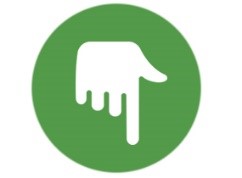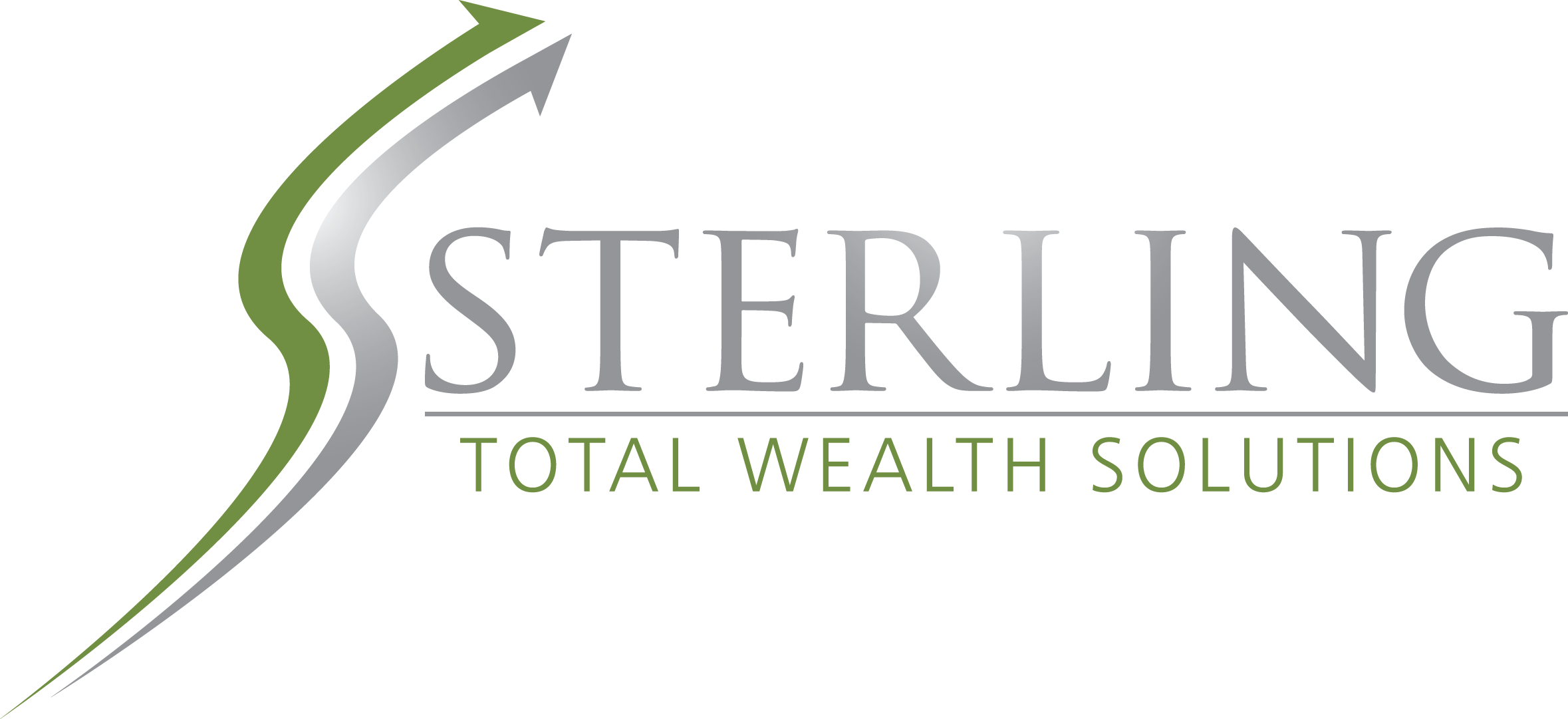In this Q1 recap: U.S. economic growth gains traction as vaccination rollout picks up speed; Stocks higher, but questions about where they go from here linger.
Quarterly Economic Update
A review of Q1 2021 | Presented by Sterling Total Wealth Solutions
THE QUARTER IN BRIEF
The first quarter started on a bumpy note as investors grappled with a slow national vaccination rollout, political uncertainty, and worries that the economic recovery may take longer than anticipated. Sentiment turned more positive, however, as a stream of positive economic data and solid fourth quarter corporate reports powered U.S equities to strong gains in the first quarter of 2021.
With 99% of the companies in the S&P 500 index reporting, 79% reported a positive earnings surprise, with just 17% reporting earnings below consensus estimates.1
Markets were also aided by a decline in new COVID-19 cases and hospitalizations, the passage of a $1.9 trillion fiscal relief bill, and the Federal Reserve’s reassurances that it would maintain its near-zero interest rate policy and monthly bond purchase program.
The stock market climb was not without its hiccups over the interpretation of comments by Fed Chair Jerome Powell, inflation concerns, and a sharp and rapid rise in bond yields. Technology shares and those of other high-growth companies experienced some of the biggest downdrafts as investors appeared to rotate into more economically sensitive stocks.
Markets advanced higher, but trading turned choppy as the quarter came to a close. Traders digested the outsized gains from the pandemic lows, and institutional investors and pension plans underwent their quarterly rebalancing. Nevertheless, stocks closed near their highs as the quarter came to a close.
THE U.S. ECONOMY
The U.S. economy continued its recovery in the first quarter, aided by a pick-up in the pace of COVID-19 vaccinations nationwide, an increase in economic reopenings at the state and local levels, and by government stimulus spending.
While economic growth in the first quarter won’t be known until April’s release of the Q1 GDP (Gross Domestic Product) report, early indications suggest a robust growth rate in the first three months of 2021, despite harsh winter weather in February that led to a slowdown in consumer spending and manufacturing activity.
According to the Federal Reserve Bank of Atlanta, which tracks economic data in real time, their model is pointing toward a 4.7% real rate of GDP growth in the first quarter.2
This encouraging outlook is supported by a jump in manufacturing activity, as measured by the ISM (Institute for Supply Management) Manufacturing PMI (Purchasing Managers Index), which reached 60.8—a three-year high. The IHS Markit U.S. Services PMI registered even stronger relative gains, posting its biggest expansion since July 2014.3,4
The consumer appears in good shape following the pandemic-induced economic shutdown, with net worth at all-time highs and liabilities near pre-pandemic levels.5
Retail sales have picked up, rising 5.3% in February after three months of declines, while home buying continues to be strong amid historically low mortgage rates.6
Contrasting this positive economic narrative is a more mixed picture for the labor market. While the unemployment rate has come down from its elevated levels in 2020, improvement has slowed. The unemployment rate for February 2021 was 6.2%, a modest decline from its December 2020 rate of 6.7%.7
The number of Americans that remain unemployed stands at 10 million, while new jobless claims hover at stubbornly high levels. For example, the 770,000 new jobless claims reported for the week ending March 13 was above the four-week moving average of 746,250.8,9
Optimism for continued economic expansion remains high, and may be well-grounded. The Federal Reserve revised its 2021 economic growth outlook in March, projecting the economy to expand by 6.5% this year—a substantial upward revision from its previous estimate of 4.2%. The Fed also forecast that the unemployment rate would decline to 4.5% by year-end, while inflation would climb modestly to 2.2%—comfortably aligned with its inflation target.10
GLOBAL ECONOMIC HEALTH
The economic recovery in the European Union (EU) was hampered by a third wave of infections and lockdowns in the first quarter. The failure of its vaccination rollout in member nations was a major contributing factor for its recovery lagging that of the U.S.
It is estimated that the GDP of the EU will shrink by 0.4% in the first quarter, a disappointing downward revision from an earlier estimated increase of 0.6%. Despite this setback, the European Central Bank (ECB) maintains that the region’s economy remains on track to grow by 4.0% in 2021. This forecast, the ECB admits, is highly conditional on making progress in vaccine distribution efforts and a reopening of member nations’ economies.11,12
China fared better than most countries in getting its economy moving again, as evidenced by its 16.9% jump in industrial output in January-February 2021, compared to the same period in 2019 (a pre-pandemic snapshot). Retail sales soared by 33.8%, though unemployment did tick up.13
Amid a third lockdown in the United Kingdom, the Bank of England expects the U.K. economy to shrink in the first quarter by 4%, though it is more hopeful going forward, thanks to a COVID-19 vaccination rollout that is gathering steam, predicting 2021 growth to be 7.25%.14
The MSCI EAFE Index, which tracks developed overseas markets, slipped 2.93% in Q1. Emerging markets felt the impact of a rising dollar and weak global economic growth. The MSCI-EM (Emerging Markets) Index rose a modest 1.95%.
T I P O F T H E Q U A R T E R

Remember that recent payment activity accounts for the bulk of most credit scores. An inactive card may actually result in a long-run negative effect on your score.
LOOKING BACK, LOOKING FORWARD
After hitting a pandemic low on March 23, 2020, stocks came roaring back, with the first quarter building on the remarkable rally of the last twelve months. The S&P 500 has appreciated roughly 76% since that bottom, as of the one-year anniversary, leaving many investors wondering where stocks go after such a powerful bull market run.15
Reflecting a cautious optimism, the Wall Street consensus for the S&P 500 is for a modest gain of 4% for the remainder of 2021 from late March levels.16
Projecting the future direction of the market is difficult in any environment, but expect that investors will be paying close attention to several key market levers going forward, namely, corporate earnings, vaccination progress, economic data, and fiscal and monetary actions from Washington and the Fed, respectively.
With regard to Washington, there are fiscal spending and taxation issues that may impact the market in the months ahead. Chief among them is President Biden’s $1.9 trillion spending proposal to fund infrastructure projects, which also may include increases in corporate taxes and some personal income tax hikes.
Another massive spending bill may cut two ways: On the one hand, the market may welcome it, seeing it as a driver of additional economic growth. Alternatively, an increase in borrowing may result in higher bond yields as the market looks to absorb the new supply of Treasuries and fuel already simmering fears of higher inflation.
|
MARKET INDEX |
Y-T-D CHANGE |
Q1 CHANGE |
Q4 CHANGE |
|
DJIA |
+7.76 |
+7.76 |
+10.17 |
|
NASDAQ |
+2.78 |
+2.78 |
+15.41 |
|
S&P 500 |
+5.77 |
+5.77 |
+11.69 |
|
YIELD |
3/31 RATE |
1 MO AGO |
1 YR AGO |
|
10 YR TIPS |
1.75 |
1.46 |
0.70 |
Sources: Wall Street Journal, March 31, 2021, Treasury.gov (Bond Yield)
The market indexes discussed are unmanaged and generally considered representative of their respective markets. Individuals cannot directly invest in unmanaged indexes. Past performance does not guarantee future results. U.S. Treasury Notes are guaranteed by the federal government as to the timely payment of principal and interest. However, if you sell a Treasury Note prior to maturity, it may be worth more or less than the original price paid.
QUOTE OF THE QUARTER

“You don’t need a weatherman to know which way the wind blows.”
BOB DYLAN
Securities offered through Registered Representatives of Cambridge Investment Research, Inc., a Broker/Dealer, Member FINRA/SIPC. Advisory services offered through Cambridge Investment Research Advisors, Inc., a Registered Investment Advisor. Sterling Total Wealth Solutions and Cambridge are not affiliated.
To learn more about Sterling Total Wealth Solutions, visit us on the web at www.sterlingtotalwealthsolutions.com
Know someone who could use information like this? Please feel free send us their contact information via phone or email. (Don’t worry – we’ll request their permission before adding them to our mailing list.)
CITATIONS:
- Factset.com, March 5, 2021
2. frbatlanta.org, April 1, 2021 - tradingeconomics.com, April 1, 2021
- tradingeconomics.com, April 1, 2021
- federalreserve.gov, April 1, 2021
- wsj.com, February 17. 2021
- statista.com, March 11, 2021
- bls.gov, April 2, 2021
- dol.gov, April 1, 2021
- cnbc.com, March 17, 2021
- ecb.europa.eu, April 2, 2021
- ecb.europa.eu, April 2, 2021
- bbc.com, March 15, 2021
- news.sky.com, February 4, 2021
- cnbc.com, March 23, 2021
- cnbc.com, March 23, 2021
